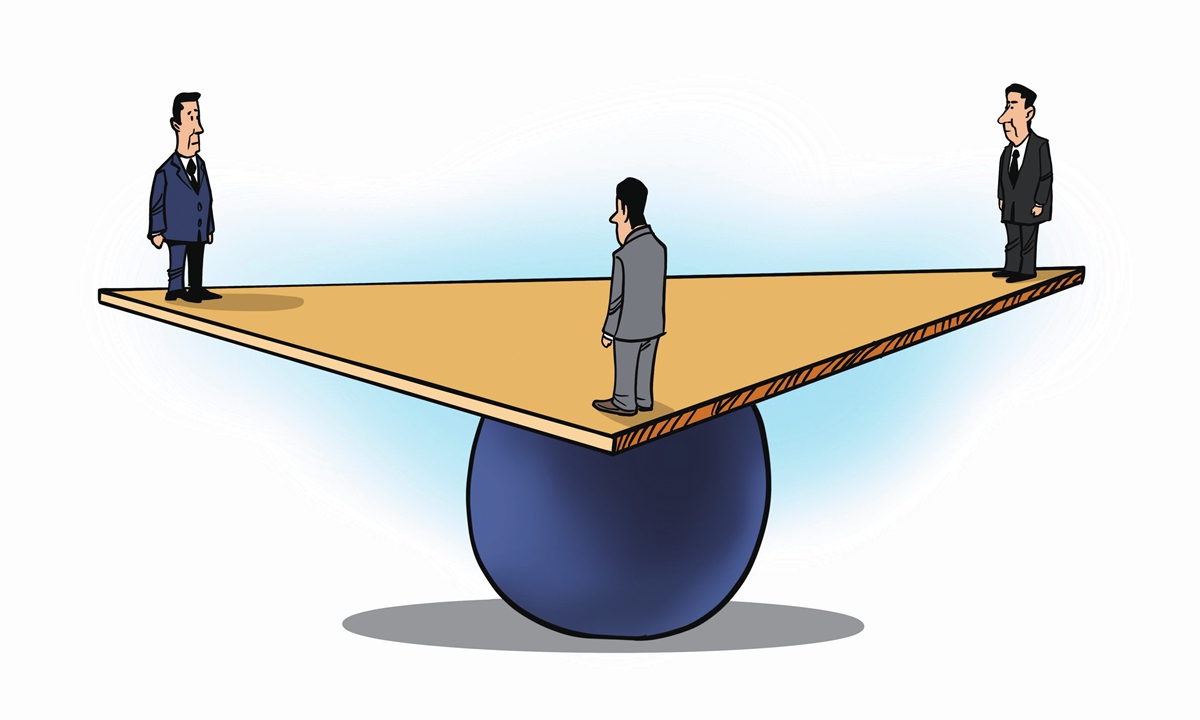Nepal Prime Minister Pushpa Kamal Dahal, aka Prachanda, concluded his four-day visit to India on Saturday. This visit has continued a tradition of new Nepalese leaders making New Delhi their first foreign port of call after assuming office. This is the fourth visit of Prachanda to India as Prime Minister of Nepal and his first oversea trip after taking office in December 2022. This visit is of particular significance as it takes place during a period of strained relations between China and India.
Both Nepalese and Indian media have taken an optimistic view of this visit, considering it an important event in Nepal-India relations. The External Affairs Ministry in New Delhi said the visit continues the tradition of “regular high-level exchanges between India and Nepal in furtherance of our ‘Neighbourhood First’ policy.” But in fact, Nepal is following its own diplomatic tradition of prioritizing neighboring countries, particularly India. Traditionally, Nepalese leaders choose India as their first overseas destination after taking office. From India’s perspective, this demonstrates that Nepal is adhering to India’s “Neighborhood First” principle, which means that India’s neighboring countries should prioritize India’s concerns and national interests.
Specifically, this visit has several key points: Firstly, Prachanda led a substantial delegation of over 100 members comprising senior officials as well as business and industry leaders. It demonstrates Nepal’s importance attached to this visit and points to the wide range of topics covered in the discussions during the visit.
Secondly, the visit focused on economic issues. A slew of agreements of long-term importance was signed. One of the great results of the visit is the signing of a long-term power-sharing agreement, under which India has agreed to purchase 10,000 megawatts of electricity from Nepal in the next 10 years. The deal “marks an important milestone in our bilateral ties,” said Prachanda.
During the visit, both sides appreciated the progress made in the construction of the 900 MW Arun-III hydroelectric project in Nepal. They also jointly carried out the groundbreaking of the 400 kV Gorakhpur-Butwal transmission line and welcomed the decision of the Indian government to fund the Bheri Corridor, Nijgadh-Inaruwa and Gandak Nepalgunj Transmission lines and associated substations. These projects, once completed, will further strengthen Nepal’s one-way economic dependence on India.
Nonetheless, it’s noticeable that Nepal remains highly focused on maintaining a balance between China and India. India continues to be the dominant country in Nepal’s affairs, but China’s influence in Nepal is also rising. To hedge the potential impact of Prachanda’s visit to India, it’s reported that Prachanda is likely to visit China next month or in early August. If it was true, this will attest to Nepal’s way of balancing between China and India. India is Nepal’s “big brother” that can determine Nepal’s fate, while China is Nepal’s “friend” that can impact Nepal’s economic development. Sandwiched between these two major powers, Nepal is unwilling to, and cannot afford to, offend either.
In recent years, India has taken many measures in Nepal to weaken the relationship between China and Nepal. On one hand, India has given the green light to cooperation between the US and Nepal, attempting to leverage US power to diminish China’s influence in Nepal. The ratification of the highly controversial Millennium Challenge Corporation Nepal Compact in 2022 would not have been possible without India’s consent. On the other hand, India has actively competed with China over major projects in Nepal. India has banned the import of electricity from Nepal that is linked to Chinese investment or involvement, be it equipment, workers, or subcontractors, a move that restricts the development of Nepal’s hydropower industry. This reflects India’s influence in Nepal and highlights the inevitable geopolitical and economic challenges in China-Nepal trade cooperation.
The core of Nepal’s policy toward China and India is to keep Nepal neutral and independent. The Himalayan country tries to strike a balance between China and India, carefully assessing the relative influence of China and India in Nepal and adjusting its policies accordingly. However, it is indeed becoming increasingly challenging for Nepal to maintain a balance between neutrality and seeking its own development, as seeking development necessitates improving relations with both China and India.
Prior to Prime Minister Prachanda’s visit to India, Nepal’s Foreign Minister Narayan Prakash Saud said in an interview that the government will continue to maintain good relationships with both countries and would not do anything to hamper ties with either of the neighbors. After all, being neutral is in the best interests of Nepal, and the country knows this well.
The author is the director of Center for South Asian Studies, Fudan University. opinion@globaltimes.com.cn













